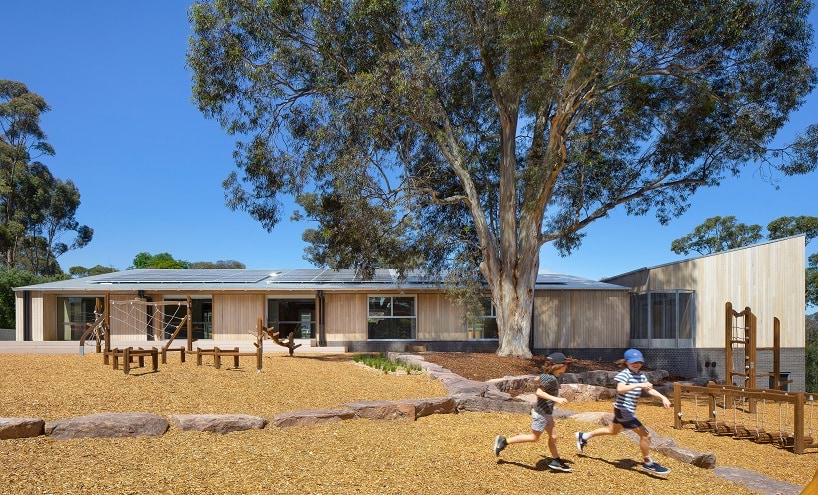You can download the traditional construct case study here or find the full text below.
Traditional building procurement is based upon full Lump Sum Contracts. Under these commonly used forms of contract, the architect is engaged directly by the client to undertake all stages of the design process and assist in administering the client’s separate contract with the builder.
The client engages the builder independently of the architect to build the works as described in the contract documentation, including specifications prepared by the architect. The client tenders these documents to a field of competitive bidders, which normally comprise a building contractor with a number of subcontractors. The selected bid documents (drawings, specification and tendered price) then form the basis of the lump sum contract between the client and the contractor, i.e. the successful bidder.
Action to benefit Good Design
- A clear design intent and brief explaining the design philosophy as part of the tender documents will help protect the design quality.
- A well-defined scope of work and comprehensive documentation to reduce variations to the contract price.
- Careful selection of the design team to ensure requisite design expertise in addition to capacity and experience.
- Establish appropriate contingencies. and clear and rigorous documentation;
- Engage design advice from the architect to assist with the design quality management in brief and contract development.
- The client understands the impartial role of the architect and their expert advice, independent of the builder.
- Ensure provision for independent design advice at key project milestones. This may include advice from a Design Quality Team or design review at the end of Concept Design or design development.
- The Client is capable and understands the challenges associated with infrastructure design and delivery and effectively manages the design team to generate a design that meets the requirements of the Project Definition.
Case study: Research Primary School, Research
Project Background
Research Primary School was completed in 2020, by Kennedy Nolan Architects, with a project value of $5.7m. The scope consisted of the refurbishment of a classroom block for a new Administration and Art Centre; and a new building containing Learning Areas and amenities. Extensive landscape works were designed to resolve access and stormwater issues and the protection of significant trees. The school’s declining enrolments, poor street address and need for refurbishment, informed a brief to deliver a new entrance and create a civic presence in the community.
Key initiatives adopted to protect the design quality
- A design and landscape led strategy, with Simon Ellis Landscape Architect, established legible and DDA compliant paths into, and around, the campus – a challenging task on steeply sloping ground.
- Rather than relying on fencing, the building was sited to form defined external areas – a contained playing and learning space with direct access to teaching spaces and most critically a central quadrangle with a broad verandah to give the school something it had never had – a Centre.
- Using design to stitch the school together physically and psychologically, creating an urban identity, wayfinding and a sense of address, to deliver a unified campus.
- Elevating the relationship between built form and the landscape, with permeable edges providing easy and direct access to an active play area to the north and the south verandah facing a new quadrangle gathering space. The building parts were pulled apart, with connections provided by generous boardwalks. This arrangement positively re-balanced the relationship between built form and landscape whilst providing protection and comfort.
- The building was clad in durable, fire-resistant timber – a material which resonates with the bush aesthetic of the area, is comfortingly non-institutional, low maintenance and sustainable.
- The interior balances a muted background palette drawn from eucalypts, which are ubiquitous in Research, tempered by intense and energising colours.
- Large trees were preserved, compliant DDA paths were established in sweeping arcs which incorporate extensive planting and rock placement.

Constraints
- Dilapidated facilities and challenging site conditions that impacted meeting the required entitlement building areas.
- Difficulty in defining the scope of landscape work and site work upgrade required.
- Within a limited budget, there was a requirement for universal access across all site facilities that previously had very limited access and the complexities of dealing with infrastructure that had been constructed in the 1950s, '60s and '80s, of which there was little to no information.
- A disproportionate perception of risk across the site impacting design outcomes for students, staff and the community.
- Limited budget, tight design parameters and challenging administrative process.
- Poor understanding of the appropriateness of timber cladding for the building, despite its sustainability and proven durability.
- The need for a design champion for the project and an understanding that risk can be managed through good design.
What worked well
- Selection of architects through an Expression of Interest (EOI) from three bidders and interview process.
- Aspirational brief from the architect supporting best practice in education and sustainability.
- Allowing the architect to select the sub-consultants, based on previous experience and no Project Manager.
- A strong design concept that was integrated with the landscape, so that regardless of value management and design restrictions, it was successful on an urban scale.
- Comprehensive documentation to minimise variations to the contract price and appropriate design and project contingencies.
- The architect established a good working relationship with the school, builder, landscape architect and consultants to deliver on time and on budget.
- The architect advocating that the school could rely entirely on electricity and did not need natural gas.
- A design team, builder (Newpol) and School Principal who followed the project through to completion.
- Connecting with the community of Research and reflecting the specific qualities of the local environment.
- Greater quality control on material selection and avoiding substitution
- which is an issue with other forms of procurement such as Design and Construct. - The Principal identified that “the school felt right for the Research kids and presented an architecture which reflected the values and aesthetics of the people who lived there”.
Updated
